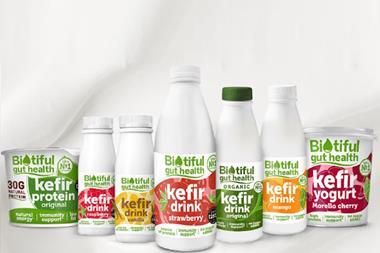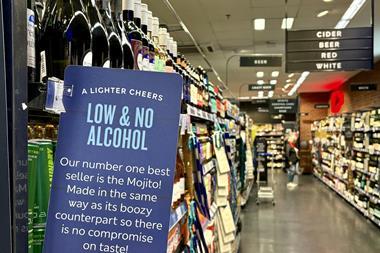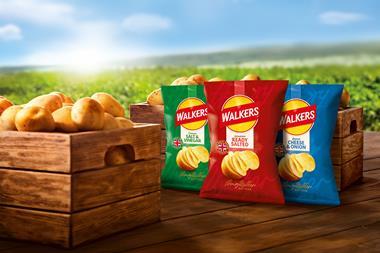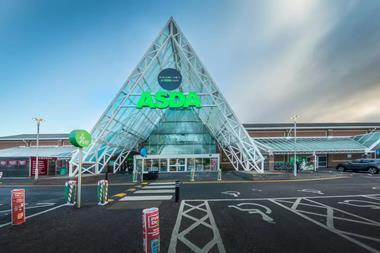Arriving at the checkout, the customer keys in a number, pays the cashier and glides through the whole process taking a fraction of the time it normally does.
Welcome to the supermarket of the future. And it is not a figment of someone's febrile imagination it is located, somewhat incongruously, in the German town of Rheinberg. But is the notoriously conservative German consumer ready for this brave new world of supermarket shopping?
Two months ago, German supermarket group Metro opened the prototype "future store" under the Extra fascia in the town, deliberately selected because it is demographically average. Its idea was to test a range of new technologies under one roof for the first time in what its IT consultant IBM has dubbed a "future store lab".
It wanted to find out whether wireless-based radio frequency identification tags, intelligent scales, shelf-edge labelling and self-scan checkouts really did improve the shopping experience or enhance supply chain efficiencies. It is a highly ambitious project. Both Gerd Wolfram, executive project manager of the Metro Group Future Store Initiative, and Alain Benichou, vice-president of EMEA, IBM's distribution arm, admit that in a project of this scale they do not expect everything to come off.
Wolfram says: "Some aspects won't work. In fact, so far, nothing is working as I expected. We expected young people to be really interested. But I was astonished to see it is the elderly people who are really using the technologies."
First impressions
As I wander round the store, however, first impressions are not encouraging. It is 10am and the store has been open for two hours but except for the groups of suited executives being given guided tours of the store, there are virtually no customers.
There are 50 PSAs available to shoppers and about 40% of those who are signed up to the Payback loyalty card scheme entitling them to use the new technology have done so. But when the guide, Marcel Uphues, proudly demonstrating how the PSA works, taps in the word milk' he draws a blank it is one of 6,000 of the 36,000 SKUs stocked by the store that have not yet been entered into the database. A smartly dressed middle-aged woman shopper points out another flaw: "It is too slow. If you have 20 of the same product, you have to scan it in 20 times. It's very time consuming. But I like it because it is new."
Wolfram admits there have been a few glitches and that the unfamiliarity of the technology can be a problem: "Some shoppers are a little disturbed but it's getting better now as people become more confident with the technology."
As we move round the store, his optimism begins to be vindicated. First we are shown the intelligent scales. A woman drops a bunch of bananas onto the scales and within seconds they have been digitally imaged and weighed, cross-referenced with pictures in the database, and a label printed. "It makes shopping fun," she says, beaming.
Then on to the new information terminals on meat, wine and baby-care that promise to add another dimension to the shopping experience. If you scan a product at the meat terminal, for instance, it not only provides detailed product information but suggests a good wine to go with it, or prints out recipes.
Also given the thumbs up are the quick checkout, the self-checkout and the hi-tech look of the store with its video and digital advertising screens that can be changed at the touch of the stock-controller's PDA.
It is not only shoppers who deliver positive verdicts. The instore RFID tag technology has been driven by three brands, Gillette, Kraft and Procter & Gamble mainly to tackle the problem of shrinkage.
Metro staff are already observing the benefits, pointing out how stock checks are more accurate and that it will help them move closer to reduced out of stocks.
So how much of it will be rolled out to the rest of the Metro chain in Germany or even adopted by rival multiples? Some, like the intelligent scales, are likely to get the green light quickly, says Wolfram. David Thomas, EMEA retail industry leader, adds that RFID is likely to be widely adopted by retailers particularly for higher value products.
He cites in-house research showing that the technology increases distribution centre efficiency by 10% to 20% and store efficiency by 5% to 10%, while reducing out of stocks by 8% in fact resolving a third of the problems that dog the instore supply chain.
Technologies for roll-out
But as far as Metro is concerned, it is unlikely to copy the full Rheinberg model in other stores, says Wolfram, and no decision will be made until an initial evaluation is made in six to eight months' time.
Meanwhile the 40 or so companies involved in the project are ironing out the glitches. Soon shoppers will be able to email shopping lists from their PCs to the PSAs in-store and be able to use a new multiplication button on their PSA so they don't have to scan identical items more than once
There are still issues to resolve, such as who pays neither Metro nor IBM would reveal how the pilot has been financed and security. Some shoppers are worried that RFID tags might be trackable even though the tags in Metro are passive and the data is "killed"on exiting the store.
But so far the signs are good and the Rheinberg store has drawn more customers than usual albeit buying fewer products.
The real test will be what happens when the novelty wears off.
{{ANALYSIS }}
Welcome to the supermarket of the future. And it is not a figment of someone's febrile imagination it is located, somewhat incongruously, in the German town of Rheinberg. But is the notoriously conservative German consumer ready for this brave new world of supermarket shopping?
Two months ago, German supermarket group Metro opened the prototype "future store" under the Extra fascia in the town, deliberately selected because it is demographically average. Its idea was to test a range of new technologies under one roof for the first time in what its IT consultant IBM has dubbed a "future store lab".
It wanted to find out whether wireless-based radio frequency identification tags, intelligent scales, shelf-edge labelling and self-scan checkouts really did improve the shopping experience or enhance supply chain efficiencies. It is a highly ambitious project. Both Gerd Wolfram, executive project manager of the Metro Group Future Store Initiative, and Alain Benichou, vice-president of EMEA, IBM's distribution arm, admit that in a project of this scale they do not expect everything to come off.
Wolfram says: "Some aspects won't work. In fact, so far, nothing is working as I expected. We expected young people to be really interested. But I was astonished to see it is the elderly people who are really using the technologies."
First impressions
As I wander round the store, however, first impressions are not encouraging. It is 10am and the store has been open for two hours but except for the groups of suited executives being given guided tours of the store, there are virtually no customers.
There are 50 PSAs available to shoppers and about 40% of those who are signed up to the Payback loyalty card scheme entitling them to use the new technology have done so. But when the guide, Marcel Uphues, proudly demonstrating how the PSA works, taps in the word milk' he draws a blank it is one of 6,000 of the 36,000 SKUs stocked by the store that have not yet been entered into the database. A smartly dressed middle-aged woman shopper points out another flaw: "It is too slow. If you have 20 of the same product, you have to scan it in 20 times. It's very time consuming. But I like it because it is new."
Wolfram admits there have been a few glitches and that the unfamiliarity of the technology can be a problem: "Some shoppers are a little disturbed but it's getting better now as people become more confident with the technology."
As we move round the store, his optimism begins to be vindicated. First we are shown the intelligent scales. A woman drops a bunch of bananas onto the scales and within seconds they have been digitally imaged and weighed, cross-referenced with pictures in the database, and a label printed. "It makes shopping fun," she says, beaming.
Then on to the new information terminals on meat, wine and baby-care that promise to add another dimension to the shopping experience. If you scan a product at the meat terminal, for instance, it not only provides detailed product information but suggests a good wine to go with it, or prints out recipes.
Also given the thumbs up are the quick checkout, the self-checkout and the hi-tech look of the store with its video and digital advertising screens that can be changed at the touch of the stock-controller's PDA.
It is not only shoppers who deliver positive verdicts. The instore RFID tag technology has been driven by three brands, Gillette, Kraft and Procter & Gamble mainly to tackle the problem of shrinkage.
Metro staff are already observing the benefits, pointing out how stock checks are more accurate and that it will help them move closer to reduced out of stocks.
So how much of it will be rolled out to the rest of the Metro chain in Germany or even adopted by rival multiples? Some, like the intelligent scales, are likely to get the green light quickly, says Wolfram. David Thomas, EMEA retail industry leader, adds that RFID is likely to be widely adopted by retailers particularly for higher value products.
He cites in-house research showing that the technology increases distribution centre efficiency by 10% to 20% and store efficiency by 5% to 10%, while reducing out of stocks by 8% in fact resolving a third of the problems that dog the instore supply chain.
Technologies for roll-out
But as far as Metro is concerned, it is unlikely to copy the full Rheinberg model in other stores, says Wolfram, and no decision will be made until an initial evaluation is made in six to eight months' time.
Meanwhile the 40 or so companies involved in the project are ironing out the glitches. Soon shoppers will be able to email shopping lists from their PCs to the PSAs in-store and be able to use a new multiplication button on their PSA so they don't have to scan identical items more than once
There are still issues to resolve, such as who pays neither Metro nor IBM would reveal how the pilot has been financed and security. Some shoppers are worried that RFID tags might be trackable even though the tags in Metro are passive and the data is "killed"on exiting the store.
But so far the signs are good and the Rheinberg store has drawn more customers than usual albeit buying fewer products.
The real test will be what happens when the novelty wears off.
{{ANALYSIS }}













No comments yet